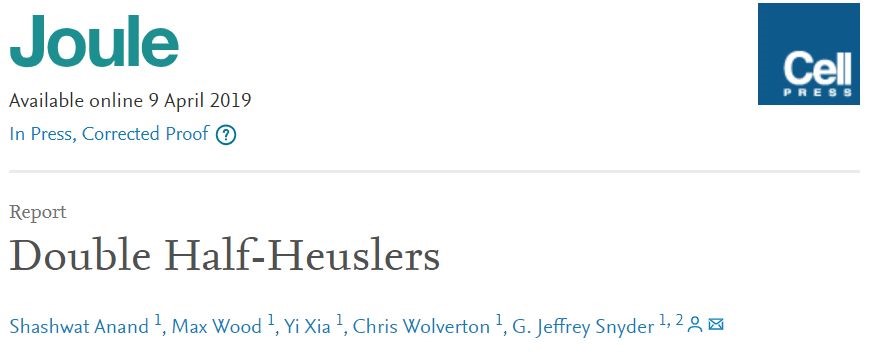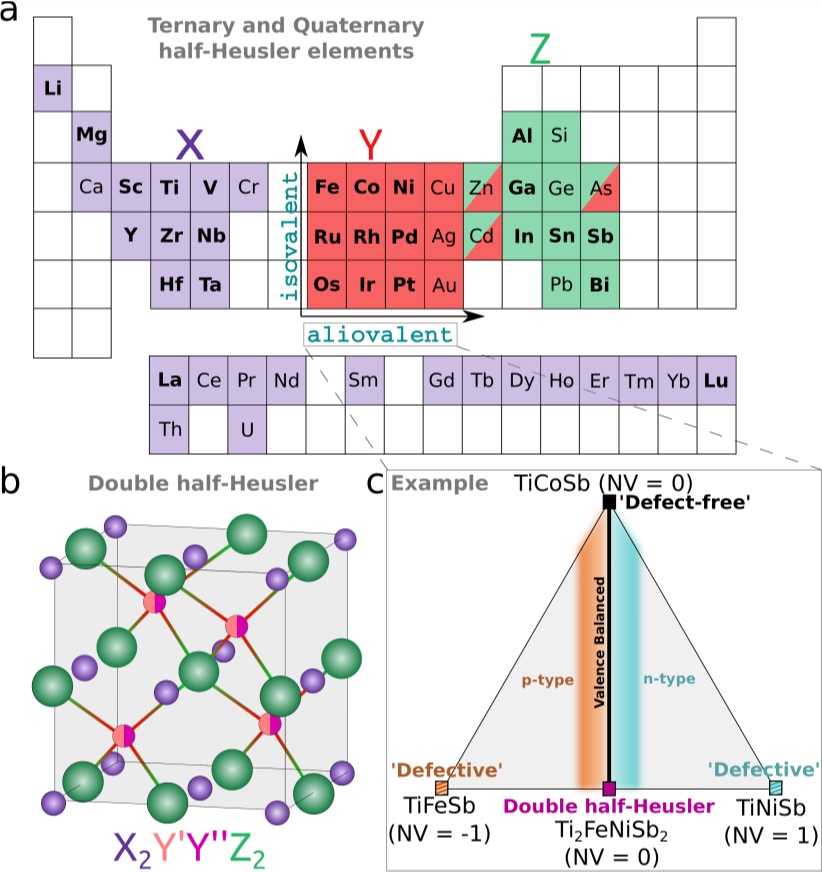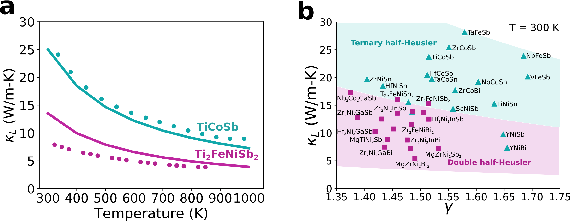【Tips:直接看大牛最新文章,请往下拉】
2019年2月初,Joule继
Research Article (研究性论文);集锦请见:
https://www.cell.com/joule/home,
Review(综述);集锦请见:
https://www.cell.com/joule/libraries/reviews
Perspective(前瞻性短综述);集锦请见:
https://www.cell.com/joule/libraries/reviews
Future Energy (未来能源);集锦请见:
https://www.cell.com/joule/libraries/future-energy
Commentary(评述性论文);集锦请见:
https://www.cell.com/joule/libraries/commentaries
Preview(预览性论文);集锦请见:
https://www.cell.com/joule/libraries/previews
六大类文章之后推出第七类文章:Report (启发性报道论文)。
以下内容来自Joule主页对Report的描述:
https://www.cell.com/joule/article-types
Description:
· Reports present highly influential findings of immediate interest to the broader energycommunity.
· They are distinct from Research Articles—Reports are more concise and, above all else, they are evaluated primarily on the importance and technical validity of the findings.
· Reports must highlight the significance and rigor of the research so the potential scientific impact is obvious to the broad and scale-spanning readership of Joule.
Length:
· A typical Report will be limited to 2500 words of text, and no more than four display items (figures and tables). Additional items and details may be published online as Supplemental Information.
Context & Scale:
· A key feature of all Joule Reports is the inclusion of a“Context & Scale” box. This is a summary to communicate to non-experts the context and implications of the research (including implications at different scales), and the challenges and opportunities in scaling up or down the conclusions presented. Authors should ensure that the text is understandable to a non-expert by minimizing technical jargon wherever possible.
· The Context & Scale statement should be 1 or 2 paragraphs with a maximum of 1000 characters including spaces.
· The Context & Scale statement may be somewhat speculative in nature. It should, however, be substantiated by the key results presented in the article.
Peer Review:
· Reports will be subject to rigorous peer review by experts on the subject matter.
· Additional effort is taken by the editorial team and reviewers to expedite this process, relative to a full research article.
一言以蔽之,Report更短小精悍。字数限制在2500字左右,需要讲清楚对一个领域具有巨大启发性,兼具时效性的想法。评审过程更注重所提出的内容的重要性并且需要一定的科研数据作为支撑。评审过程也相对更迅速。写作手法上需要精炼出所提内容的重要性和准确性,要能引起广大观众的阅读兴趣,并给不同能源领域的科学家以启发。相比于Research Article,Report对表征和具体机理的讨论相对更少,但可以有支持文件(supporting information)。
以下举个最近上线的Joule Report文章作为例子。

第一作者:Shashwat Anand
通讯作者:G. Jeffrey Snyder
通讯单位:NorthwesternUniversity, Evanston, Illinois 60208, United States
双半赫斯勒化合物
在过去的十年中,半赫斯勒化合物因其热电性能引起了人们的广泛关注1–3。由于其热电性能能够通过其多样的化学空间来调节,研究者们在该系列化合物中发现了多种高性能热电材料(例如p型的NbFeSb4,TaFeSb5和ZrCoBi6, 以及n型的TiNiSn7,8。然而,与一些基于IV-VI族化合物9,10的高性能热电材料相比,三元半赫斯勒化合物由于其较高的本征晶格热导率(κL)而处于劣势。例如,高性能半赫斯勒热电材料之一的ZrCoBi6在室温报道的最低热导率是κL= 10W / m-K,而相同温度下高性能热电材料PbTe的本征晶格热导率为 2 W / m-K11。
我们基于晶体化学12探索了一大类相对未被开发并且具有更低晶格热导率的双半赫斯勒四元化合物。 这些四元化合物的设计思想是基于半赫斯勒结构中三个原子位点中的任何一个中的异价取代(例如,用Fe和Ni取代Ti2FeNiS2中的Y原子,参见图1c)。 由于它们独特的价态均衡组成,这些化合物在低温下形成有序化合物,并且其κL低于三元半赫斯勒化合物(见图2a)。 通过对其中35种化合物的第一原理热导率计算,我们发现与三元系统相比双半赫斯勒化合物总体具有更低的热导率(见图2b)。

Figure 1. (a) 元素周期表中占据立方半赫斯勒结构各原子位点元素的图示 (X (紫色), Y (红色) 和Z (绿色)) (结构见b). 组成四元半赫斯勒化合物的元素来自于图中字体加粗的元素。(b) 具有X2Y'Y''Z2形式的(无序)双半赫斯勒化合物结构。在Y原子位点,不同的元素具有相同的占据比率,从而遵循半赫斯勒化合物的价电子排布。(c) 一个基于异价取代Y原子位点四元化合物的例子: TiFexCoyNi1−x−ySb.双半赫斯勒化合物Ti2FeNiSb2 (紫色正方形) 和 半赫斯勒化合物 TiCoSb (蓝色正方形) 保持价态均衡 (净价电子, NV = 0). 临近的基于 Fe (橙色) 和 Ni (青色) 取代的化合物分别代表了 p和n-型组合. NV ≠ 0 的三元化合物 (红色/白色正方形) 代表了具有缺陷的(否则不稳定的)半赫斯勒化合物 (TiFe1.5Sb13 and Ti0.75+δNiSb14).
在较高温度下,这些四元化合物经历有序无序转变(参见图1b),由此产生的声子合金散射机制能够进一步降低导热率(参见图2)。 我们的结果还指出了许多可能的合金化机制(见图1c),从而引入空位和间隙缺陷,以进一步降低双半赫斯勒的本征热导率。

Figure2. (a) 理论计算(实线) 以及实验测量 (散点) 得到的随温度变化的晶格热导率 (κL): TiCoSb (青色) 和 Ti2FeNiSb2(品红). TiCoSb 热导率的实验值来自于 Sekimoto 及其合作者.15 (b) 理论计算得到的 κL和 Gruneisen 系数 (γ):基于常见元素的半赫斯勒化合物 (三角形) 和双半赫斯勒化合物 (正方形)。图中的阴影展示了 κL 基于γ−2的关系.
除了作为热电材料的应用之外,双半赫斯勒化合物还可用于替代三元半赫斯勒化合物在透明导电薄膜(例如TaIrGe16),拓扑半金属(例如HfIrAs17)和自旋电子学(例如V0.8+δCoSb14,18)中的应用。随着新增元素带来的额外可能性,这些四元化合物的数量也远大于三元半赫斯勒化合物。 基于热力学稳定性的第一性原理计算,我们预测了实验中尚未被合成的131种新化合物。 因此,我们的结果为功能性金属间半导体新材料的发现和应用提供了无限的可能。
热电材料学术QQ群:699166559
作者简介:

G. Jeffrey Snyder ( 中文名:裁杰夫 )
Northwestern University
Materials Science and Engineering
Evanston IL 60208
(626) 395-6220, jeff.snyder@northwestern.edu
http://thermoelectrics.matsci.northwestern.edu/
G. Jeffrey Snyder (裁杰夫), 美国伊利诺利州西北大学材料工程系教授。裁杰夫教授在材料物理化学领域有着广泛的研究兴趣,主要专注于热电材料的改良与优化,例如能带工程,复杂津特耳(Zintle)化合物的设计,以及具有纳米结构的复合材料。裁杰夫教授应用于热电材料的跨学科研究方法来源于他丰富的早期研究经历。裁杰夫教授于1991在美国康奈尔大学获得物理,化学和数学的学士学位,随后在德国马克思普朗克研究所从事固态化学的研究,1997年在美国斯坦福大学获得电磁输运方向的应用物理博士学位,之后加入美国喷射推进实验室开始热电材料的研究 (1997-2006),于2006-2014期间担任美国加州理工大学材料学院Faculty Associate并且开始专注于热电材料及器件的研究。迄今为止,裁杰夫教授已经发表了超过400篇关于热电材料的学术论文,并且被汤森路透列为高被引用(2016-2018)。由裁杰夫教授指导的学生和博士后在多次在领域内获得权威奖项,包括Goldsmid以及ITS Young Investigator 奖。
热电材料学术QQ群:699166559
References
1. Zeier, W. G., Schmitt, J., Hautier, G., Aydemir, U., Gibbs, Z. M., Felser, C., and Snyder, G. J. (2016). Engineering half-Heusler thermoelectric materials using Zintl chemistry. Nat. Rev. Mater. 1, 16032.
2. Zhu, T., Liu, Y., Fu, C., Heremans, J. P., Snyder, J. G., and Zhao, X. (2017). Compromise and synergy in high-efficiency thermoelectric materials. Adv. Mater. 29, 1605884.
3. Mao, J., Liu, Z., Zhou, J., Zhu, H., Zhang, Q., Chen, G., and Ren, Z. (2018). Advances in thermoelectrics. Adv. Phys. 67, 69–147.
4. Fu, C., Bai, S., Liu, Y., Tang, Y., Chen, L., Zhao, X., and Zhu, T. (2015). Realizing high figure of merit in heavy-band p-type half-Heusler thermoelectric materials. Nat. commun. 6, 8144.
5. Zhu, H., Mao, J., Li, Y., Sun, J., Wang, Y., Zhu, Q., Li, G., Song, Q., Zhou, J., Fu, Y., He, R., Tong, T., Liu, Z., Ren, W., You, L., Wang, Z., Luo, J., Sotnikov, A., Bao, J., Nielsch, K., Chen, G., Singh, D. J., and Ren, Z. (2019). Discovery of TaFeSb-based half-heuslers with high thermoelectric performance. Nat. Commun. 10, 270.
6. Zhu, H., He, R., Mao, J., Zhu, Q., Li, C., Sun, J., Ren, W., Wang, Y., Liu, Z., Tang, Z., Sotnikov, A., Wang, Z., Broido, D., Singh, D. J., Chen, G., Nielsch. K., and Ren. Z. (2018). Discovery of ZrCoBi-based half heuslers with high thermoelectric conversion efficiency. Nat. commun. 9, 2497.
7. Sakurada, S., and Shutoh, N. (2005). Effect of Ti substitution on the thermoelectric properties of (Zr, Hf)NiSn half-Heusler compounds. Appl. Phys. Lett. 86, 082105.
8. Rogl, G., Sauerschnig, P., Rykavets, Z., Romaka, V., Heinrich, P., Hinterleitner, B., Grytsiv, A., Bauer, E., and Rogl, P. (2017). (V, Nb)-doped half heusler alloys based on {Ti, Zr, Hf}NiSn with high zT . Acta Materialia 131, 336–348.
9. Pei, Y., Shi, X., LaLonde, A., Wang, H., Chen, L., and Snyder, G. J. (2011). Convergence of electronic bands for high performance bulk thermoelectrics. Nature 473, 66-69.
10. Heremans, J. P., Jovovic, V., Toberer, E. S., Saramat, A., Kurosaki, K., Charoenphakdee, A., Yamanaka, S. and Snyder, G. J. (2008). Enhancement of thermoelectric efficiency in PbTe by distortion of the electronic density of states. Science 321, 554–557.
11 Romero, A., Gross, E., Verstraete, M., and Hellman, O. (2015). Thermal conductivity in PbTe from first principles. Phys. Rev. B 91, 214310.
12. Toberer, E. S., Zevalkink, A., and Snyder, G. J. (2011). Phonon engineering through crystal chemistry. J. Mater. Chem. 21, 15843–15852.
13. Naghibolashrafi, N., Keshavarz, S., Hegde, V. I., Gupta, A., Butler, W., Romero, J., Munira, K., LeClair, P., Mazumdar, D., Ma, J., Ghosh, A. W., and Wolverton, C. (2016) Synthesis and characterization of Fe-Ti-Sb intermetallic compounds: Discovery of a new Slater-Pauling phase. Phys. Rev. B 93, 104424.
14. Anand, S., Xia, K., Zhu, T., Wolverton, C., and Snyder, G. J. (2018). Temperature dependent n-type self doping in nominally 19-electron half-heusler thermoelectric materials. Adv. Energy Mater. 8, 1801409.
15. Sekimoto, T., Kurosaki, K., Muta, H., and Yamanaka, S. (2006). Thermoelectric and thermophysical properties of TiCoSb-ZrCoSb-HfCoSb pseudo ternary system prepared by spark plasma sintering. Mater. transactions 47, 1445–1448.
16. Yan, F., Zhang, X., Yonggang, G. Y., Yu, L., Nagaraja, A., Mason, T. O., and Zunger, A. (2015). Design and discovery of a novel half-heusler transparent hole conductor made of all-metallic heavy elements. Nat. Commun. 6, 7308.
17. Gautier, R., Zhang, X., Hu, L., Yu, L., Lin, Y., Sunde, T. O., Chon, D., Poeppelmeier, K. R., and Zunger, A. (2015). Prediction and accelerated laboratory discovery of previously unknown 18-electron ABX compounds. Nat. Chemistry 7, 308-316.
18. Ma, J., Hegde, V. I., Munira, K., Xie, Y., Keshavarz, S., Mildebrath, D. T., Wolverton, C., Ghosh, A. W., and Butler, W. (2017). Computational investigation of half-heusler compounds for spintronics applications. Phys. Rev. B 95, 024411.
19. Graf, T., Felser, C. and Parkin, S. S. (2011). Simple rules for the understanding of Heusler compounds. Prog. solid state chemistry 39, 1–50.











